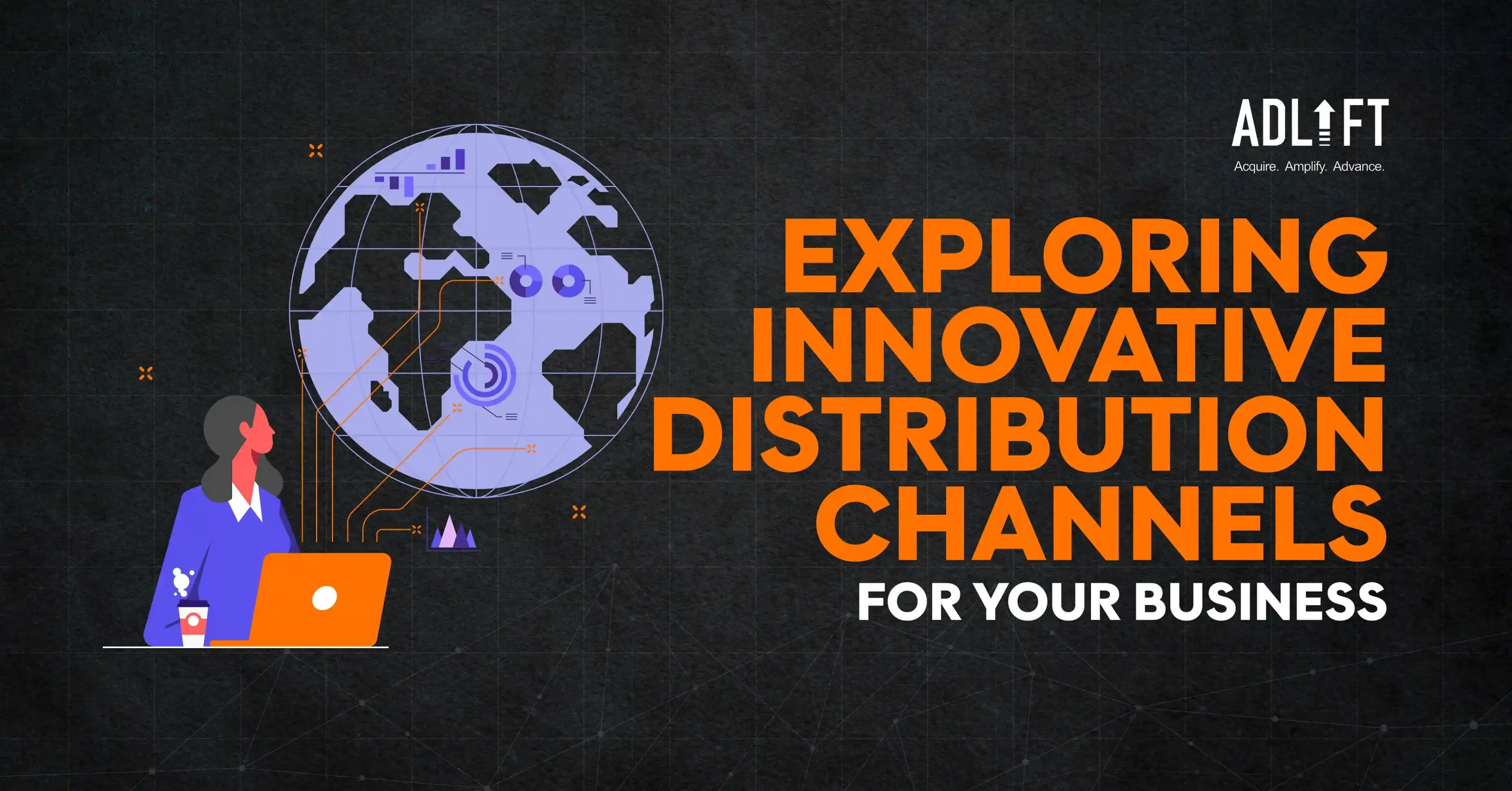Multi-Channel Mania: Mastering Distribution Channels to Reach Customers Everywhere

A Harvard Business Review study showed a big shift in shopping habits: 73% of people now use a variety of ways to shop, not just in stores or online. What does this mean? Shoppers regularly jump across at least two or more marketing channels before making a purchase. There has been a crucial shift in consumer behavior over the last decade, making it essential for businesses to move from single-channel marketing to multi-channel marketing, especially if you are an eCommerce business.
Today, It’s an omnichannel marketing world. To reach your audience effectively, you must plan an approach that uses various distribution channels in marketing. These channels are the pipelines through which your product or service flows from conception to the hands of your happy customers. What do you need to do? Figure out how to use multiple distribution channels through multi-channel marketing. And that’s precisely what we will take you through via this blog.
The Rise of the Multi-Channel Customer:
Today’s customers have a whole new world at their fingertips for product discovery, moving far beyond brick-and-mortar stores and traditional print ads. Today’s consumer seamlessly blends online and offline channels throughout their purchase journey. Today’s omnichannel shopping experience is all about exploration. Consumers might research on review sites, be swayed by influencer content, and then head in-store to get a feel for the product before making a purchase. Finally, they may complete the purchase online or through a mobile app. This multi-channel experience has become the norm, and businesses that need to adapt are leaving a significant portion of their customer base on the table.
The Power of Multi-Channel Distribution:
There are several distribution channels in marketing. These types of channels include direct or indirect channels. Direct Channels involve selling your product or service directly to the customer without intermediaries. Indirect Channels involve one or more middlemen who help distribute your product to a broader audience. Some common indirect channels include retailers, wholesalers, distributors, and affiliate marketing.
The best channel for your business depends on various factors, including your target audience, product type, budget, and desired level of control over distribution.
Multi-channel distribution involves strategically utilizing several channels to reach your target audience.
This approach offers various substantial benefits:
- Increased Customer Reach: Expanding your presence across multiple channels exposes your brand to a broader audience, leading to potential new customers.
- Improved Brand Awareness: A consistent brand message across various channels fosters stronger brand recognition and builds trust with potential buyers.
- Enhanced Customer Experience: When you offer a variety of ways to shop (online, in-store, etc.) and make it easy to switch between them, customers are happy! This keeps them coming back for more
- Greater Control Over Brand Messaging: You can ensure consistent messaging and brand identity by managing your presence across various channels.
- Opportunities for Targeted Marketing: Each channel offers unique targeting options. Deliver the right marketing message at the right time by matching your content to the channels your customers prefer.
Building Your Multi-Channel Strategy:
The first step to mastering multi-channel distribution is identifying the key channels relevant to your business. Here are some of the most common types of channels of distribution to consider:
- Online Marketplaces: Websites like Amazon and Etsy are like giant online malls, filled with potential customers who are already looking for the kind of products you sell.
- Brick-and-mortar Stores: Traditional physical stores continue to be valuable, offering a tangible shopping experience and the opportunity to build relationships with local customers.
- Get social, get sales! Don’t underestimate the power of Instagram and Facebook! They’re amazing platforms to show off your brand, chat with potential customers, and turn them into buyers.
- Your website or E-Commerce Store is your central hub. It allows you to control the customer experience and showcase your entire product range.
- Email Marketing: This allows for targeted communication, building relationships, promoting special offers, and fostering customer loyalty.
Pro Tip: Audience Analysis for Channel Selection
It pays to know who you’re selling to! Before you jump into using a bunch of different channels to sell your product, take a step back and figure out who your ideal customer is. Who are you trying to reach? Dig into your target audience’s buying habits. What channels do they use to learn about products and ultimately make purchases? Figuring out who your ideal customer is helps you pick the best channels to reach them with your marketing messages.
Mastering the Several Types of Channels for Distribution:
Now that you’ve identified your key channels let’s explore how to optimize each one for maximum impact:
- Online Marketplaces: Write compelling product listings with high-quality images, detailed descriptions, and positive customer reviews. Consider utilizing paid advertising options to reach a wider audience within the platform.
- Brick-and-mortar Stores: Create an inviting and visually appealing in-store experience. Train your staff to be knowledgeable and provide excellent customer service. Utilize local marketing strategies like partnerships with other businesses or community events.
- Social Media Platforms: Develop engaging content that resonates with your target audience. Use popular hashtags to help people find your posts and run specific ads to target people who might be interested in what you offer. Most importantly, actively engage with your followers through comments and messages.
- Website/E-commerce Store: Ensure your website is user-friendly with a clean design and easy navigation. Prioritize mobile optimization for seamless browsing on smartphones and tablets. Offer secure payment options and a smooth checkout process. Provide excellent customer service through live chat or email
- Send emails people actually want to read! Break down your email list into groups based on things like age or what they’ve bought before. This lets you send more relevant emails that people will find interesting. Offer valuable content, exclusive promotions, or loyalty programs through email campaigns. Track results and optimize your email strategy based on open rates and click-through rates.
The Art of Integration:
A successful multi-channel strategy goes beyond simply having a presence on various platforms. The key lies in creating a seamless experience for your customers, regardless of the channel they interact with. Here’s how to achieve this:
- Consistent Branding and Messaging: Maintain a consistent brand voice, logo, and visual identity across all channels. This fosters brand recognition and builds trust with your audience.
- Data Analysis for a Unified View: Utilize data analytics tools to track customer journeys across different channels. Tracking how customers interact with your brand helps you understand what’s working well and where you can improve to provide a better experience.
Here are some examples of how data analysis can be used to create a unified experience:
- Retargeting website visitors with social media ads showcasing the products they viewed.
- Sending abandoned cart emails to customers who initiated a purchase online but still need to complete it.
- Offering in-store discounts or promotions based on a customer’s previous online purchases.
By leveraging data, you can personalize the customer experience across all channels, creating a sense of continuity and fostering brand loyalty.
In today’s market, a multi-channel distribution approach is no longer a luxury but a necessity. By strategically utilizing various distribution channels and creating a seamless customer experience, you can reach a wider audience, build brand awareness, and drive sales. So, ditch the single-channel approach and embrace the power of multi-channel mania!
FAQs
The journey from your product to a customer’s hands is made possible by distribution channels. These are the different routes your product takes to reach its target audience. These channels can be online (e.g., websites, social media) or offline (e.g., brick-and-mortar stores).
Distribution channels can have various levels. A direct sales model involves selling directly to the customer without any intermediaries. In an indirect sales model, one or more intermediaries (wholesalers, distributors, retailers) are involved in the distribution process.
As discussed in the blog, distribution companies utilize various channels, including online marketplaces, brick-and-mortar stores, social media platforms, websites/e-commerce stores, and email marketing.
The best channels for your business depend on your target audience, product type, and budget. Do some market research to figure out which channels your customers use the most. Then, pick those channels to use for your marketing so you can reach them directly.
Implementing these insights and leveraging the power of multi-channel distribution can unlock new growth opportunities and help you connect with your customers on a deeper level.
Recent Posts
- Google’s Latest Shake-up: November 2024 Core Update November 13, 2024
- What is Evergreen Content? Build Traffic That Never Fades October 15, 2024
- Customer Acquisition 101: Building a Loyal Client Base October 10, 2024
- What is Schema Markup? Strategies to Use it for Better SEO Performance September 16, 2024
- How to Attract Customers? Steps to Turn Visitors into Loyal Clients September 12, 2024
- Mastering Digital Advertising: Tips for Maximum Impact September 8, 2024
- Everything You Need to Know about SEO Statistics: Ultimate Guide to Data and Facts September 4, 2024
- From Traffic to Website Leads: Maximize Your Conversion Rate September 4, 2024
- Content Marketing Lead Generation: Strategies that Work September 4, 2024
- What is Meme Marketing? How to Tap Into Viral Culture September 4, 2024
Get
in Touch
Contact AdLift for a 360-degree marketing plan

